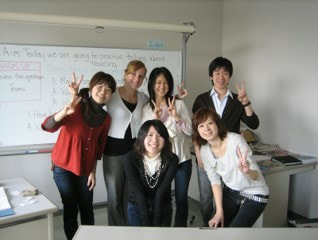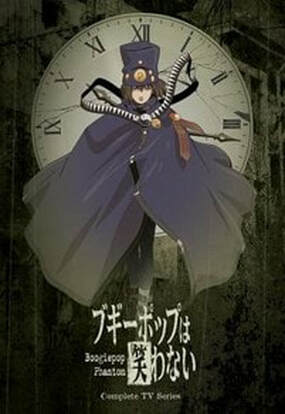A little over a year ago Briana contributed a post about YA books that consider how we define a border. It was informative and well done. Our issues with border and people who want to cross the border remain. These are human issues and some of prepare teachers who work with students who live in the realities of border crossing and undocumented existence. It is worth reading again. (Find it here)
Manga as Classroom Counterculture by Briana Asmus

After receiving my teaching certification in 2005, my first job was teaching middle school students in South Korea, followed by a brief stint teaching high schoolers in Japan. For two years, I was immersed in teaching English in countries where I didn’t speak the language, and, from a cultural perspective, sometimes struggled to connect with my students. One day, early in my career, one of my students presented me with a gift. It was a small cellphone charm, with a manga character on it. “What’s this?” I asked. “It’s Allen in D.Gray-man”, my student said, “My favorite.”
I was eager to connect with this student, so I looked it up. D.Gray-man was the title of a popular manga series (later turned into an anime series) featuring Allen Walker, a character who joins a group of exorcists in an alternative 19th Century Japan. Written by female manga author Katsura Hoshino, the series is smart and dark, with themes of morality, loss, and identity. Upon reading the first volume, it was clear to me why this series appealed to this particular student, and I began to think about the ways I could use manga to build background with my students.
| Fast forward to the present, and I can thank my students for turning me into a manga fan. I am also a self-identified counterculturist, since before I understood what the team meant. As a sociological term, “counterculture” falls under the umbrella of subculture and is marked by “alternative” moral formation that counters that of the dominant culture. My interests have always been unorthodox, and I believe that my involvement with counterculture makes me a better teacher; I tend to connect with students who are labeled as “different” and have varying interests. I’ll bet the first to admit that participating in counterculture is not always easy. When strangers ask about my favorite books, hobbies, or music, it’s unlikely we will have something in common, but as a teacher, I am privileged to be an ambassador to the different, the new, and the unusual. As one of my favorite actors and counterculturalist Simon Pegg said, “Being a geek is is all about being honest about what you enjoy and not being afraid to demonstrate that affection. It means never having to play it cool about how much you like something. Being a geek is extremely liberating.” |
See a free Preview of Vol. here
While this may seem strange to American society, in many ways it is representative of the types of connections we want students to make with texts. For example, how often do we ask them to role-play, or write from the perspective of a character? How often do we wish for the type of voracious reading, that causes them to serially consume a good book?
Manga and anime (the animated version) lend themselves well to this type of textual involvement. In fact, much (though not all) of anime is rooted in manga, allowing students to make cross-textual connections. In my experience, teaching and using both as resource, or a connection to an anchor text, offers students a safe way to participate in counterculture.
| Erased by Kei Sanbe Erased is one of those manga series that is enjoyable at any age. It’s premise is fairly simple: Satoru, a 29-year old failed manga artist who delivers pizza, experiences a phenomenon that causes him to go back a few minutes in time and prevent a death, or any other kind of life-threatening incident. He refers to this phenomenon as “revival.” Early in the series we learn that Satoru has some repressed memories from a kidnapper he befriended as a child, and a strained relationship with his mother. One day, Satoru experiences a revival that puts him 18 years back into his childhood, when these incidences were taking place. |
Without giving too much away, what’s interesting about this text is it’s focus on human nature, and our human ability to not only repress, but to confront that which keeps us from realizing our full potential. The text was adapted into an anime series and a live-action film, available on Netflix.
| Death Note by Tsugumi Ohba Once I started reading the gothic Death Note, I truly couldn’t stop. This manga series (also available in an animated and love-action film), follows a high-school senior named Light, whose father is a detective on the police force. Light finds a notebook, dropped from the netherworld by a demon named Ryuk. The power of the notebook is that anyone whose name is written in it by the holder will die, but there are rules and limitations that Light becomes aware of as he struggles with the power of the death note. Nearly every episode introduces a new rule, keeping the series fresh and engaging. Teachable moments: As Light becomes the holder of the death note, he goes through a transformation of sorts. He meets another female character, who also has a death note, and several times is challenged in his assumptions about humanity. In many ways, he is instrumental in his own demise. |
| Boogiepop Phantom by Kouhei Kadono Boogiepop is an older series (first appearing in 2000), appearing as a “light” novel (a type of novel that’s a quick read), origin story, anime and live-action series. For it’s age, the plot and themes are incredibly progressive: An organism disguises itself as an evolved human. A group on earth tries to eliminate these evolved humans, but a shinigami (god of death) seeks to protect them. The recurring characters affected are all school-age girls with their own problems and internal conflicts, but as a non-linear series, the plot itself is not actually what Boogiepop is about. Instead, the themes play out in extended metaphors. Teachable moment: Both the light novel and anime series examine these such as time, change, and how age affects our perception of events. Check out Episode 14 in the animated series, for example, for an examination of desire. Left unfulfilled, it consumes a person, and can lead to one’s eventual demise. The whole manga series can be read for free online, here. |
| Ichi-F by Kazuto Tatsuya This is my one non-fiction selection, as some of the same themes of time, memory, and human perception play out in this text. In a truly detailed account, Tatsuta tells readers what it was like to work at ground zero of the cleanup sight after the Fukushima disaster. The text was considered by many to be one of the only reliable accounts of what transpired after the disaster and during the cleanup process. The author, who kept his identity and manga project a secret during the writing process, is careful not to demonize his employers and sticks to the facts, which are often incredibly procedural. Teachable moment: In the manga, Tatsuta does not usually give his opinion, especially when it comes to big questions, like, Should the power plant have been closed? Should we continue to rely on power plants like Fukushima? This actually forces students to come up with these answers themselves based on evidence from the text. |
Until next time.









 RSS Feed
RSS Feed